menu
Menu
Under construction
Hope Cove
Let's start with the name ….. as ever there are several theories.
'Hop' in Old English = circular valley
'Hop' in Norse = bay
1281 Assize Rolls known as 'la Hope'
1330 known as 'attention Hope'
1620 known as 'Hope Key'
Let's start with the name ….. as ever there are several theories.
'Hop' in Old English = circular valley
'Hop' in Norse = bay
1281 Assize Rolls known as 'la Hope'
1330 known as 'attention Hope'
1620 known as 'Hope Key'
Sources
Wikipedia
'Hope Cove, the history of a Devonshire Fishing Village' by Richard Le Cheminant
'Hope Cove, Galmpton and South Huish' Hope Archive Group
www.escapetobritain.com
www.submerged.co.uk
Wikipedia
'Hope Cove, the history of a Devonshire Fishing Village' by Richard Le Cheminant
'Hope Cove, Galmpton and South Huish' Hope Archive Group
www.escapetobritain.com
www.submerged.co.uk
Evidence of Iron Age fort on Bolt Tail. Likely to have been houses on the inside. Cove likely to have been used for fishing by the inhabitants.
Iron Age
The Spanish Armada of 1588, comprising 130 ships past close by to Hope Cove as they moved up the channel and back again upon their retreat. On 28th October, a storm blew the 'San Pedro deal Mayor' (St Peter the Great) onto the Shippen rocks, according to a number of records. The San Pedro was a hospital and supply ship, with a crew of 30 plus 100 soldiers. There appears to have been 40-50 survivors. Rumours of gold and silver coins being found since abound. Wood from the ship is supposedly in the Village Inn, Thurlestone and some armour is at the Cookworthy Museum in Kingsbridge. The Cabin cottage next to the post office is supposedly built from the Sea Pedro's timbers.
1558
Hope Cove fishermen caught mainly crabs, lobsters and pilchards. This would have been subsistence living and the residents likely supplemented their income through plundering ships wrecks and smuggling which was common along the Devon and Cornish coast. One example, was HMS Ramillies which ran aground on Bolt Tail on 14th February, 1760. Only 30 survived from a crew of over 700.
The public houses of the 'Hope and Anchor 'and 'Bird in the Hand' housed the seamen who survived.
The public houses of the 'Hope and Anchor 'and 'Bird in the Hand' housed the seamen who survived.
1700s
South Huish Parish records 'a little fishing place called Hope or Salt Bay'.
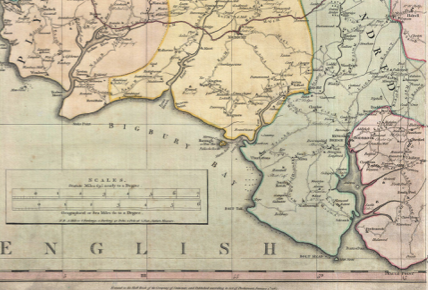
Hope appears on Benjamin Don's Map of the County of Devon in 1765.
1765
The Cantiloupe hit the rocks at Bantham before breaking up at Hope Cove. The wreckers arrived and brutally killed a noble woman and took all her clothes and jewellery, cut off her finger for her rings and was left to die - not the reception she was expecting!
1772
Courtenay Estates Survey (1777) gives more details of Hope Cove. The Earl of Devon was the landowner.
Inner and Outer Hope were not directly linked at the time. The number of buildings were very limited, but some still exist.
Inner Hope Square: Rambler, Rosecote, Verbena, Devon and Orchard Cottages, plus the boathouse at the top of the slipway.
Outer Hope: Limekiln now Spray cottages and Bolt Barn
Inner and Outer Hope were not directly linked at the time. The number of buildings were very limited, but some still exist.
Inner Hope Square: Rambler, Rosecote, Verbena, Devon and Orchard Cottages, plus the boathouse at the top of the slipway.
Outer Hope: Limekiln now Spray cottages and Bolt Barn
1777
The Waterguard (a forerunner to the coastguard) was established to stop smuggling around the coast of Britain. A watchtower was positioned on Bolt Tail. Nightly a rowing boat would go out and patrol Bigbury Bay. They were housed in 'Watch Houses'.
Smuggling was a lucrative business with import taxes high for a number of goods including wool (Exeter) copper and tin (West Country).
Smuggling was a lucrative business with import taxes high for a number of goods including wool (Exeter) copper and tin (West Country).
1809
The Coastguard was formed in 1922, crewed with ex naval men. The Coastguard replaced the Waterguard, Revenue Cutters and Riding Officers. The eight coastguards and their officer were housed initially in 'the buildings' in Outer Hope on Shippen, before moving to Spray cottages in Inner Hope which became their base after 1857.
1822
Plans were made to build a breakwater at a cost of £3000. After much thought and debate the plan was scrapped as there was no guarantee of success and costs could easily spiral out of control.
1820s
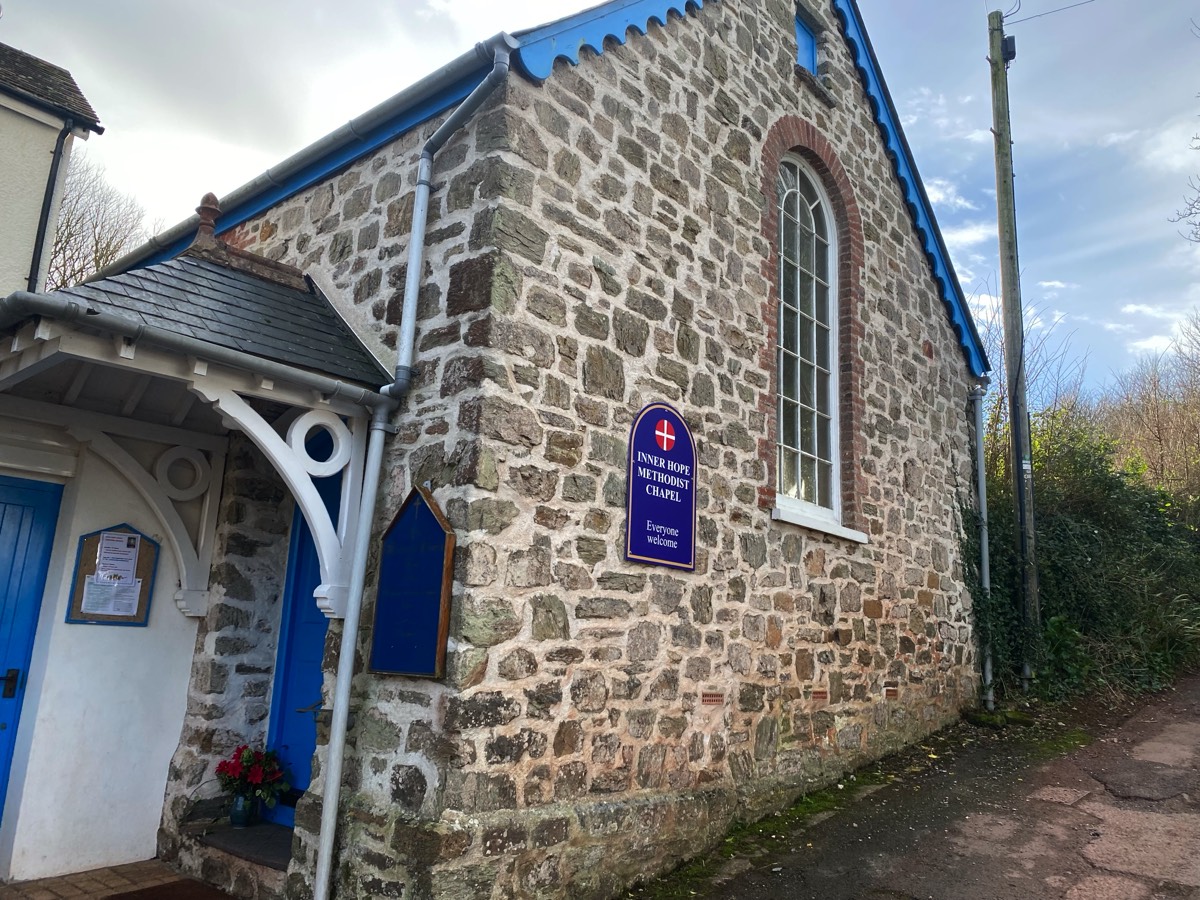
1860 saw the building of the Methodist Chapel in the square in Inner Hope. Methodists had previously worshipped in the homes of residents in Hope Cove and Galmpton.
1860
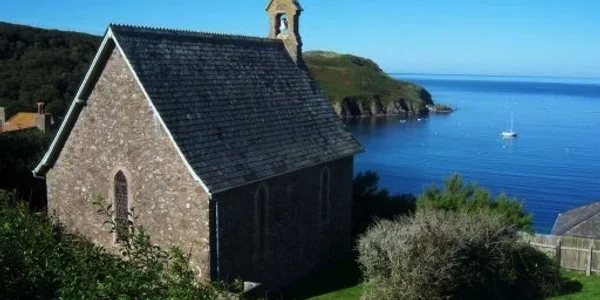
After the opening of the Methodist Chapel some residents of Hope Cove lobbied the Earl of Devon for a place of worship for themselves. Some sources suggest that other churches were too far away so the people of Hope Cove had stopped attending church on a regular basis.
St Clements Church sits on the cliff overlooking both Hopes and cost £542 10s 0d to build. The land was donated by the Earl of Devon who along with Sir George Turner paid for the construction. Named after the patron saint of tanners and mariners. it was built, for the local fishermen to seek refuge in bad weather when on their way to South Huish.
The typical school bell seen in the picture is evidence that St Clements was used a s school for a number of years before the establishment of a church school in Galmpton in 1868.
St Clements Church sits on the cliff overlooking both Hopes and cost £542 10s 0d to build. The land was donated by the Earl of Devon who along with Sir George Turner paid for the construction. Named after the patron saint of tanners and mariners. it was built, for the local fishermen to seek refuge in bad weather when on their way to South Huish.
The typical school bell seen in the picture is evidence that St Clements was used a s school for a number of years before the establishment of a church school in Galmpton in 1868.
1862
The first Hope Cove Lifeboat was operational in 1878, funding by the Masons and included the boathouse.
1878
Hope Cove appeared on the Ordinance survey map of 1886. The Hope and Anchor Inn was known to exist at this time but did not appear on the map. A road linked the two Hopes at this time. Leaseholders are listed with their acreage.
1886
The Great Blizzard of March 1891 saw Hope Cove cut off completely as snow drifts of up to 15 feet blocked all the lanes . More than 200 people and 6000 animals in the south west died. It is often sited as the worst storm ever in this past of the world.
1891
The earliest reference to a Post Office in Hope goes back to 1892, with Mrs Mary Dimmond serving as postmistress.
1892
The 'Blesk' a Russian steamer sank off Bolt Tail in 1896. It was the first oil tanker to meet such a fate in British waters. The Hope Cove lifeboat saved all the crew in two trips. It was an environmental disaster, the stench alone made people vomit and the sea creatures suffered enormously.
1896
A public telegraph office was opened connecting this remote part of Devon with the rest of the world.
1906
The first motor car made an appearance in Hope Cove in 1907.
1907
The 'SS Jebba' was another casualty of the rocks at Bolt Tail in 1907. The crew and passengers were safely rescued by bosun's chair, organised by local fishermen Isaac Jarvis and John Argeat, who were awarded the Albert Medal for Lifesaving (later converted to the George Cross).
1907
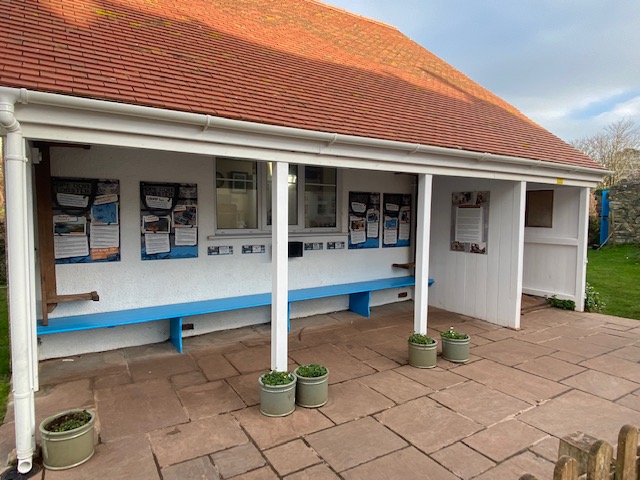
The Fisherman's Reading Room, built in 1908, came about through Eleanor Appleton, who wished to honour the memory of her late husband William Appleton of Grimsby. We are not sure of his connection to Hope, though he must have visited as he spoke of constructing a breakwater but was concerned about the cost. Built at a cost of £150 on the leased land and was designated for 'reading only'- not for commerce, religious or political use. In addition not alcohol could be brought onto the premises and gambling was prohibited. In 1920 the freehold was bought for the Reading Room by its members.
1908
The 'Jane Rowe' ran aground between Bolt Head and Bolt Tail in 1914, on a sandy beach in dense fog, whilst heading to Rotterdam. Five tugs were unable to free the steamer and eventually the crew were 'roped 'off' up the cliff after the Hope Cove lifeboat could not get alongside. Over the next 20 years the ship broke up, though its boilers can still be seen.
1914
'The First World War' had less impact on Hope Cove than the Second World War in terms of direct involvement but not in terms of human cost. Though Hope Cove was far from world affairs in 1914, many young men volunteered to join the army at the outbreak of war in 1914. 21 from the South Huish Parish left for war with 17 of those young men never returning.
World War I
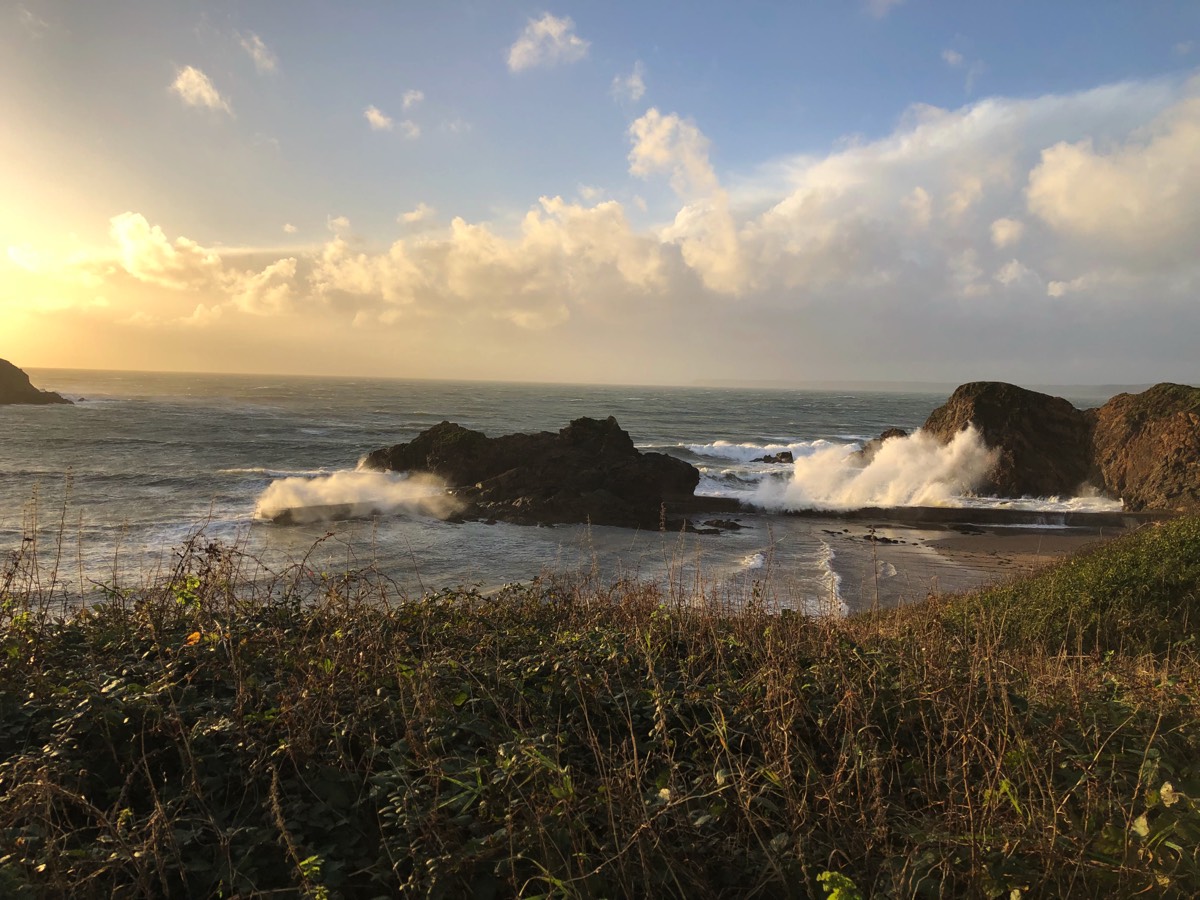
A harbour wall to protect the fishing boats had long been discussed. Lots of options were discussed including sinking of decommissioned ships full of concrete. Construction started in the spring of 1924, with an extension added the following year. The Hope Harbour Commission was established to manage the harbour and collect fees as the commission pays rent to HM govt. Many fishermen criticised the harbour wall as being inadequate but as fishing declined the need decreased. Currently there is a campaign to raise funds to improve the wall not to protect fishing boats to but protect the beach for residents and tourists.
1920s
Hope Cove's first bus service began in 1925, running every two hours to and from Kingsbridge.
1925
The 'Le Marechal Joffre' ran aground very close to the SS Jebba wreck. Once again local men Jack Jarvis and Tom Perring came to the rescue, scrambling down the rocks, but faced high winds and a heavy swell. Others joined them and eventually got the crew ashore. They received monetary rewards for their endeavours.
1925
Cottage Hotel, started life as a private residence, before becoming a guesthouse in 1927, with it being extended in 1936. Its famous guest at the time was Haile Selassie, the Ethiopian emperor who had to flee Mussolini.
1927
The 'Charter' became the second victim of the same stretch of sandy beach as the Jane Rowe due to fog in 1933. The crew disembarked at low tide, hoping to refloat at the next high tide but unfortunately that was not to be and the ship broke up to merge with the wreckage of the 'Jane Rowe'
1933
The Pilchard fishing industry came to end. Bringing to end the 'Pilchard Cove'. The pilchards were eaten locally fresh, or salted to keep. Fish carts took them to local markets and any surplus was sold to farmers to be used as fertiliser.
1939
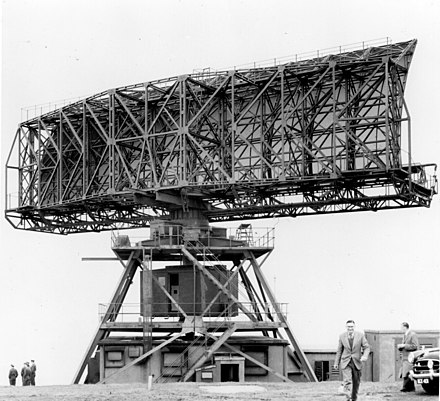
Hope Cove became a hive of activity during the Second World War. With the threat of invasion on the beaches of Bigbury Bay the 'Home Guard' was formed and defences built. Pill boxes appeared at the top of the slipway in Inner Hope (disguised as a chapel) and at the base of the Shippen - which still exists.
Fishermen who hadn't been called up for active duty, were restricted to inshore fishing.
Refugees were welcomed, some were school girls from Kent whilst others were German Jews .
RAF personnel flooded the village.
"RAF Hope Cove' was established as a radar station in 1941, with an RAF regiment to guard it. RAF Bolt Tail airfield next to it was expanded. Nissen huts appeared and many of those billeted in Hope Cove were moved out. Officers however remained in the Cottage Hotel and certainly benefitted from a superior level of dining. WAAFs and NCOs were based in houses through the village. The RAF requisitioned several houses and the Grand View Hotel as the airfield and radar station expanded further.
The standout tragedy of this period was when the airfield was out of action due to dense sea mist. A squadron of Polish fighter were returning from France and running low on fuel and insisted on landing on Bolt Tail. Sadly 10 fighters crashed into the cliffs and 2 crashed on landing - only 1 pilot survived.
Fishermen who hadn't been called up for active duty, were restricted to inshore fishing.
Refugees were welcomed, some were school girls from Kent whilst others were German Jews .
RAF personnel flooded the village.
"RAF Hope Cove' was established as a radar station in 1941, with an RAF regiment to guard it. RAF Bolt Tail airfield next to it was expanded. Nissen huts appeared and many of those billeted in Hope Cove were moved out. Officers however remained in the Cottage Hotel and certainly benefitted from a superior level of dining. WAAFs and NCOs were based in houses through the village. The RAF requisitioned several houses and the Grand View Hotel as the airfield and radar station expanded further.
The standout tragedy of this period was when the airfield was out of action due to dense sea mist. A squadron of Polish fighter were returning from France and running low on fuel and insisted on landing on Bolt Tail. Sadly 10 fighters crashed into the cliffs and 2 crashed on landing - only 1 pilot survived.
World War II
Hoppe Cove got its first public lavatories, only 22 years after being first proposed. That's a long time to cross your legs!
1955
The first Hope Cove Weekend took place this year. It's since become a hugely popular event for the local community and tourists alike, taking place over the August Bank holiday each year.
1973
Hope Cove Lifeboat an independent lifeboat was registered as a limited company then achieved charity status the following year. It works with the Coastguard in rescuing people in Bigbury Bay.
The Lifeboat is solely dependent on donations to keep it operational. Please check out the website for further information and donations: https://www.hopecovelifeboat.org
The Lifeboat is solely dependent on donations to keep it operational. Please check out the website for further information and donations: https://www.hopecovelifeboat.org
2010







